Talk Abstracts and Speaker Biographies
-
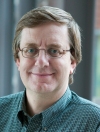 Research career – Industry vs. academia
Research career – Industry vs. academiaBiography
Andrew Herbert is the managing director of Microsoft Research in Cambridge. Initially joining Microsoft Research in 2001 as an assistant director, in March 2003 he succeeded the founding director, Roger Needham.
Andrew’s research interests include networks, operating systems, programming languages, and distributed information sharing.
Before joining Microsoft Research in 2001, he was director of Advanced Technology at Citrix Systems, Inc., where he was instrumental in steering the company toward Internet thin-client technologies, initiating development of products for Web-based application deployment and for the emerging application-service-provider market.
Andrew joined Citrix in 1998 from Digitivity, Inc., which he had founded in 1996 to develop a product to enable secure deployment of Java clients for business-to-business applications. Digitivity was a spinoff from APM, Ltd., a research/consulting company Andrew had founded in 1985. APM managed ANSA, an industry-sponsored program of research and advanced development of distributed-systems technology to support applications integration in enterprisewide systems. The ANSA work included research on support for interactive multimedia services, object technology for World Wide Web applications, distributed-systems management, mobile-object systems, and security for electronic commerce. Herbert led the ANSA technical program, built the ANSA team, created the ANSA architecture, and made it known and respected in the industry.
Andrew is a fellow of Wolfson College Cambridge, England, a member of St John’s College Cambridge, and a liveryman of the City of London Worshipful Company of Information Technologists. In 1975, he graduated from the University of Leeds with a B.Sc. in computational science, and in 1978, he received a Ph.D. from the University of Cambridge in computer science.
-
 How to write a great research paper
How to write a great research paperHow to give a great research talk
Abstract
Writing papers and giving talks are key skills for any researcher, but they aren’t easy. In this pair of presentations, I’ll describe simple guidelines that I follow for writing papers and giving talks, which I think may be useful to you too. I don’t have all the answers – far from it – and I hope that the presentation will evolve into a discussion in which you share your own insights, rather than a lecture.
Biography
Simon Peyton Jones, MA, MBCS, CEng, graduated from Trinity College Cambridge in 1980. After two years in industry, he spent seven years as a lecturer at University College London, and nine years as a professor at Glasgow University, before moving to Microsoft Research in 1998. His main research interest is in functional programming languages, their implementation, and their application. He has led a succession of research projects focused around the design and implementation of production-quality functional-language systems for both uniprocessors and parallel machines. He was a key contributor to the design of the now-standard functional language Haskell, and is the lead designer of the widely-used Glasgow Haskell Compiler (GHC). He has written two textbooks about the implementation of functional languages. More generally, he is interested in language design, rich type systems, software component architectures, compiler technology, code generation, runtime systems, virtual machines, garbage collection, and so on. He is particularly motivated by direct use of principled theory to practical language design and implementation – that’s one reason he loves functional programming so much. He is also keen to apply ideas from advanced programming languages to mainstream settings.
-
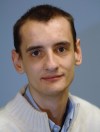 Towards a peer-to-peer file backup system
Towards a peer-to-peer file backup systemAbstract
Peer-to-Peer systems have received a lot of attention in recent years. The key property of Peer-to-Peer systems is self-scaling, i.e. as more peers become part of the system not only the service demand increases but also the service capacity. The research community has shown an increasing interest in the use of P2P systems for file storage. This application can be very attractive for two main reasons: (i) centralized solutions are expensive (ii) common PCs are equipped with high-capacity local disks, often underutilized. The design of a Peer-to-Peer storage system is not a trivial task and presents a considerable number of challenging problems. I will illustrate briefly some of the issues involved, explaining some of the solutions I proposed so far during my Ph.D. thesis.
-
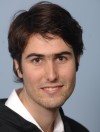 Generalizing the discrete analyses of genetic networks using constraints
Generalizing the discrete analyses of genetic networks using constraintsAbstract
Our work generalizes the current existing discrete approaches for analyzing the properties of genetic networks as proposed by Thomas using concepts that are available in constraint programming (CP). Thomas’ networks can be formalized, generalized and implemented using constraints. At the limit the proposed approach combines both aspects of simulation and reverse engineering. The ultimate goal of this work is to allow biologists to explore the combined effects of various types of hypotheses such as the assumed gene interactions and the expected dynamic behavior. We have developed a constraint program that utilizes the assumed hypotheses expressed as data. When the data is interpreted by a CP processor the proposed system is capable of responding to multiple queries that encompass simulation, reverse engineering and hybrid combination of the two. After a presentation of our approach, I will show you the constraint program in action with the following functionalities: combination of simulation and reverse-engineering, addition of hypotheses about the combination of interactions over the genes of the network, creation of mutants, relaxation of constraints in case of incoherence (the data having contradictory effects), and consequently suggestion of refinement of the model.
-
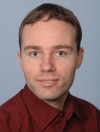 Why breaking other kids’ toys (in time) is an achievement in computer science
Why breaking other kids’ toys (in time) is an achievement in computer scienceAbstract
Automated software verification is a superb challenge. Unfortunately, in the many years of research in this field, few actual products (if any) have been proven correct beyond doubt. We can, however, look back to a long history of spectacular successes in software falsification (think Ariane 5). The problem is that bugs are usually buried deep in the software and traditional testing techniques just don’t dig deep enough. I will talk about an approach that accelerates the digging, allowing us to dig deeper for bugs and “break the toy” before somebody else breaks it unintentionally. I’ll also explain how finding deep bugs in abstract software models can help verifying the actual software.
-
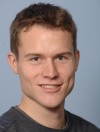 Computational prediction of three-dimensional protein structure from NMR chemical shifts
Computational prediction of three-dimensional protein structure from NMR chemical shiftsAbstract
Proteins are involved in virtually every biochemical reaction in a living cell. A protein’s function is strongly dependent on its three-dimensional structure and there is a large interest in the pharmaceutical industry to understand the native structure of proteins in order to perform targeted drug design. Existing experimental techniques offer high spatial resolution, but tend to be costly and time-consuming. A novel method, CamShift-MD, will be presented that is based on relatively easy to perform chemical shift measurements from nuclear magnetic resonance spectroscopy. This method predicts protein structure by introducing restraints into molecular dynamics computer simulations. CamShift-MD offers a new way of automatically generating protein structures based on a combination of experiment and theory. It has the potential to solve structures for which traditional methods are not suitable, such as highly dynamical non-native states. Moreover, the method can be used to determine protein ensembles. Unlike a single, rigid structure, such ensembles reveal information about the distribution of conformations and dynamics of molecules in solution, providing us with a better picture of the behaviour of proteins in the cellular environment.
-
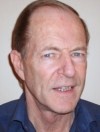 Giving a good presentation
Giving a good presentationAbstract
Lecture, Presentation or Conversation? We will examine: Who your audience is; What they want; Why you are addressing them; How you handle practical issues like nerves, body language, speech & voice, humour, visual aids etc.; What is success? What is plan B if everything goes wrong; How you recover.
Biography
Ken Shaw has taught communication skills to MBA students at Judge Business School for 17 years. He has also taught at Said Business School, London Business School, Cass Business School, Henley Management College, ESMT in Berlin, Bled School of Management plus Leicester, Nottingham and Bristol universities. He has delivered training for commercial clients in France, Germany, Switzerland, The Bahamas, Holland, Norway, America, The Caribbean, Australia and Singapore.
-
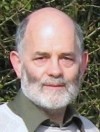 Mind-reading machines
Mind-reading machinesAbstract
Facial displays are an important channel for the expression of emotions, and are often thought of as projections of a person’s mental state.Computer systems generally ignore this information.Mind-reading interfaces infer users’ mental states from facial expressions, giving them a degree of emotional intelligence. We use video processing to track two dozen features on the user’s face. These are then interpreted using statistical techniques through a hierarchy of analyses as basic actions, head and facial gestures, and finally groups of mental states. The talk will describe an implementation of facial affect inference, together with an evaluation and some preliminary results of using the system to monitor car drivers.
Biography
Peter Robinson is Professor of Computer Technology and Deputy Head of Department at the University of Cambridge Computer Laboratory in England, where he leads the Rainbow Group working on computer graphics, interaction and electronic CAD. He is also a Fellow, Praelector and Director of Studies in Computer Science at Gonville & Caius College where he previously studied for a first degree in Mathematics and a PhD in Computer Science under Neil Wiseman.
Professor Robinson’s research concerns problems at the boundary between people and computers. This involves investigating new technologies to enhance communication between computers and their users, and new applications to exploit these technologies. The main focus for this is human-computer interaction, where he has been leading work for some years on the use of video and paper as part of the user interface. The idea is to develop augmented environments in which everyday objects acquire computational properties through user interfaces based on video projection and digital cameras. Recent work has included desk-size projected displays and inference of users’ mental states from video images of their faces.
-
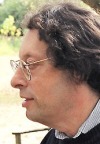 Rough guide to being an entrepreneur
Rough guide to being an entrepreneurAbstract
At some stage you might want to exploit your ideas by starting a company, just as Bill Gates and Paul Allen did in 1975. It might even be the next Microsoft, or bought by them. I’ll give an overview of the process, explain some of the success factors investors look for, and how to go about writing a business plan and getting off the ground.
Biography
Jack Lang is a serial entrepreneur and business angel with high-tech and internet companies based in Cambridge, where he is Entrepreneur in Residence, Centre for Entrepreneurial Learning, at the Judge Business School, University of Cambridge, an affiliated Lecturer and member of the Faculty Board at the Computer Lab and a by-fellow of Emmanuel College. His latest venture is as co-Founder of Artimi, which is making the next generation of ultra wide band wireless chips. Previously he was founder of Netchannel Ltd, an early Interactive TV company which was acquired by ntl: where he became Chief Technologist. Before that founder of Electronic Share Information Ltd, one of the first online brokerages, acquired by E*Trade Inc. Prior to that he started a consultancy (now SAIC UK Ltd) that was involved in the early days of the “Cambridge Phenomenon”, and was a proper academic at the Computer Lab. He is author of “The High Tech Entrepreneurs Handbook” (FT.Com/Prentice Hall 2001). He has other interests in molecular gastronomy and fireworks.
-
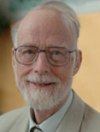 Grand challenges in computer science
Grand challenges in computer scienceAbstract
One way to do great research is to work with a great team, collaborating over an extended timescale, to find answers to fundamental questions that lie at the very basis of your branch of science. I will call such a project a Grand Challenge.
Grand Challenges have long been common in Astronomy (the Hubble telescope) and in Physics (the large hadron collider), and more recently in Genetics (the enumeration of the human genome). Here are six Grand Challenges that have recently been singled out by UK computer scientists for the attention of the research community:
- ‘in vivo = in silico’– multi-level simulation of the behaviour of biological organisms;
- ‘memories for life’– rapid recall of a lifetime’s memories;
- ‘architecture of the mind and brain’– simulation of the relation between them;
- ‘non-classical computation’– a search for a theory that covers the wide range of computing phenomena in nature;
- ‘ubiquitous computing’– principles of engineering of the swarms of computers that surround us;
- ‘dependable systems evolution’– programs that are proved correct by the computer before running them.
Can you think of any more? I will talk in more detail about the last of these, which has been my own life-long research interest.
Biography
Tony Hoare’s computing interests were stimulated by his first (and only) degree in the humanities (1956): he studied Latin and ancient Greek, followed by philosophy, with particular interest in mathematical philosophy and logic. He learnt Russian during National Service in the Royal Navy. He spent a postgraduate year studying statistics at Oxford and another at Moscow State University, where he discovered the sorting algorithm Quicksort. In 1960, he joined the British Computer industry as a programmer, eventually rising to the rank of Chief Engineer.
His Academic career started in 1968 with appointment as professor at the Queen’s University, Belfast. He chose his long-term research area as proof of the correctness of programs. In the thick of the troubles, he built up a strong computing department, and moved in 1978 to do the same at Oxford. Following the example of Theoretical Physics, his interests broadened to the pursuit of Unifying Theories of Programming.
On reaching retiring age, he accepted an offer of employment at Microsoft Research in Cambridge, where he has seen a strong surge of interest in automation of computer proofs of program correctness. He continues to pursue this interest, while exhorting academic researchers in long-term pursuit of even more idealistic scientific goals.
-
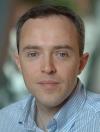 How does the Internet work?
How does the Internet work?Abstract
Could you explain how the Internet works in simple terms to someone else? Are there any gaps in your understanding, or questions you have? In this talk I’ll be giving an introductory description to how it all works.
Biography
Richard Black is currently a Research Software Development Engineer at Microsoft Research Cambridge, where he is part of the Systems and Networking group. His research interests include performance analysis of distributed systems, operating systems and networking. Recent projects include: Constellation, and Network Inference. The Network Inference project gave rise to the Network Map feature of Windows Vista. Underlying the Network Map feature is the LLTD protocol which is licensed by many companies as part of the Windows Rally program.
Richard obtained his B.A. in Computer Science from the University of Cambridge in 1990 and his Ph.D. addressing issues in operating systems and networking interaction in 1995. After a further three years at the University of Cambridge Computer Laboratory as a research associate and research fellow he moved in 1997 to a lectureship at the University of Glasgow Department of Computing Science. He returned to Cambridge in January 2000, to join the Microsoft Research laboratory, initially as a Researcher. He changed role to Research Software Development Engineer in 2006.
-
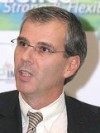 How to apply for funding? In search of the holy grail
How to apply for funding? In search of the holy grailAbstract
Wouldn’t it be nice to have unlimited sources of funding for your research? Wouldn’t it be nice to have the freedom to operate? Wouldn’t is be nice not to be bothered with constant applying and competing for financial sources? These are some of the topics we will discuss, we will talk about unmet needs and I will give you some pointers how to address the issue of finance and finance acquisition.
Biography
Wouter Spek is currently the Director for EuroBioFund at the European Science Foundation, which he joined early in 2006. The aim of EuroBioFund, also supported by the European Commission, is to promote the development of strategic European Research Programmes in the area of life sciences. Dr. Spek received his Ph.D. in biochemistry from Leiden University (1988), with part of the research undertaken at the University of California, San Diego. From there he began his professional career at Senter (1988-1996), the agency of the Ministry of Economic Affairs responsible for all science and technology subsidy programmes, as project advisor/deputy head of the biotechnology division. Dr. Spek subsequently moved to The Netherlands Organisation for Scientific Research, where he was co-ordinator of the Life Sciences Research Council Earth & Life Sciences (ALW-NWO) (1996-2002). In 2002 he joined the Netherlands Genomic Initiative as Manager for Innovation and International Affairs, where he was involved in bringing together relevant partners for projects, including industrial partners, government agencies, and start-up companies.
-
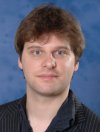 Take control or how to manage your supervisor
Take control or how to manage your supervisorAbstract
This session will look at how to make supervision work well for you. It will argue that to get the most out of your relationship with your supervisor you will need to be proactive and assertive. In particular the session will encourage you to think about the following issues:
- The relative rights and responsibilities of the supervisor and supervisee;
- What your supervisor cares about and how you can move up in their priorities;
- Strategies that you can use to manage the supervision and make them more useful;
- What to do if things go wrong.
Biography
Tristram Hooley is Senior Network Manager for the UK GRAD Programme wherehehasresponsibility for liaising between the programme anduniversities.He wrote a PhD on dystopian fiction before goingon to workin various capacities including web design, learning technology, researcher, and skills trainer. He is particularly interested in the career development of researchers, online research methods, social capital and the pedagogy of the research degree.
-
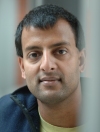 Write off-loading: Practical power management for enterprise storage
Write off-loading: Practical power management for enterprise storageAbstract
In enterprise data centres power usage is a problem impacting server density and the total cost of ownership. Storage uses a significant fraction of the power budget and there are no widely deployed power-saving solutions for enterprise storage systems. The traditional view is that enterprise workloads make spinning disks down ineffective because idle periods are too short. We analyzed block-level traces from 36 volumes in an enterprise data centre for one week and concluded that significant idle periods exist, and that they can be further increased by modifying the read/write patterns using write off-loading. Write off-loading allows write requests on spun-down disks to be temporarily redirected to persistent storage elsewhere in the data centre. The key challenge is doing this transparently and efficiently at the block level, without sacrificing consistency or failure resilience. We describe our write off-loading design and implementation that achieves these goals. We evaluate it by replaying portions of our traces on a rack-based testbed. Results show that just spinning disks down when idle saves 28–36% of energy, and write off-loading further increases the savings to 45–60%.
Biography
Dushyanth Narayanan is a researcher in the Systems and Networking group at Microsoft Research, Cambridge. His most recent research interest is in reducing the energy consumption and improving the performance of enterprise storage.
-
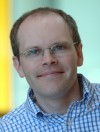 Surface computing: the post-PC experience
Surface computing: the post-PC experienceAbstract
The long-established ‘desktop’ computing metaphor continues to drive a lot of our interactions with computers, But at the same time, new interaction paradigms are being developed and we believe that these will increasingly complement the traditional computing experience. To this end, at Microsoft Research we are exploring a number of new interaction technologies along with the novel form factors, user experiences and usage scenarios they enable. This talk will present some of our work on ‘surface computing’, a new approach to interaction which doesn’t required a keyboard or mouse for input, but which is inherently multi-user and which allows direct manipulation of digital content with hands, fingers and via tangible objects.
Biography
Steve Hodges has a background in a broad range of computer-related technologies. His first degree is in Computer Science with Electronic Engineering, from University College London, and he received his PhD from Cambridge University Engineering Department in the area of Robotics and Computer Vision. Prior to joining Microsoft Research, he was the Technical Director of the Cambridge Auto-ID Lab, where he was involved with many activities, including the global research programme, the US Field Trial, the hardware-oriented action groups and privacy and IP policy development. Due to its success, the work of the Auto-ID Lab has been handed over to GS1 (formerly UCC.EAN, the barcode custodians). Steve has co-authored and presented a number of Auto-ID Centre white papers, and he has also given presentations to a wide range of audiences on the Auto-ID and EPC system. He was a founding director of the easyEPC RFID training and consultancy company. He worked as a Research Engineer for a number of years at the Olivetti and Oracle Research Lab, which became AT&T Laboratories Cambridge before eventually shutting down in 2002. This lab was internationally recognised as a centre of excellence across a broad range of advanced research into communications, multimedia and mobile technologies.
-
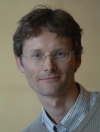 Enzymatic computing
Enzymatic computingBiography
Klaus-Peter Zauner is a Lecturer in the Science and Engineering of Natural Systems Group of the School of Electronics and Computer Science at the University of Southampton. He was born in Stuttgart, soldered together a Sinclair ZX81 as his first computer and went on to study Biochemistry at the University of Tuebingen. Intrigued by Nature’s molecular scale information processing mechanisms he left Tuebingen in 1992 for Detroit to join Michael Conrad’s Biocomputing Group. Under Michael Conrad’s mentorship he worked on conformational computing and enzymatic computing. Klaus-Peter received his Ph.D. in computer science from Wayne State University, Detroit in 2001. He started his academic career as a Visiting Assistant Professor at Wayne State University, then returned to Europe in 2002 to work with Peter Dittrich in the Bio Systems Analysis Group at the University of Jena, before taking up his current position in 2003. He served on the Governing Board of the International Society of Molecular Electronics and BioComputing and is an Editorial Board Member of the International Journal of Unconventional Computing. He is a Microsoft Research European Fellow (2005) and recipient of a Leverhulme Research Leadership award (2007).
